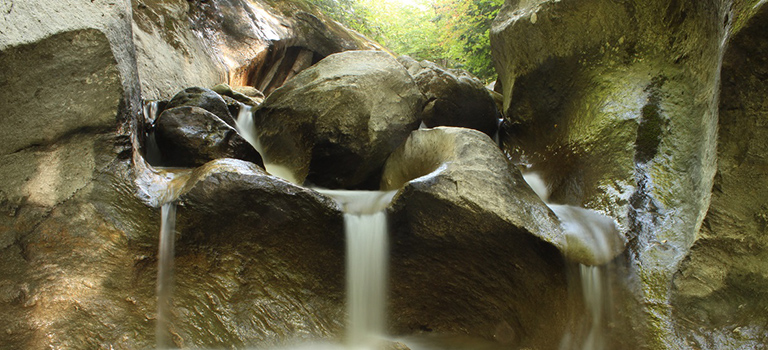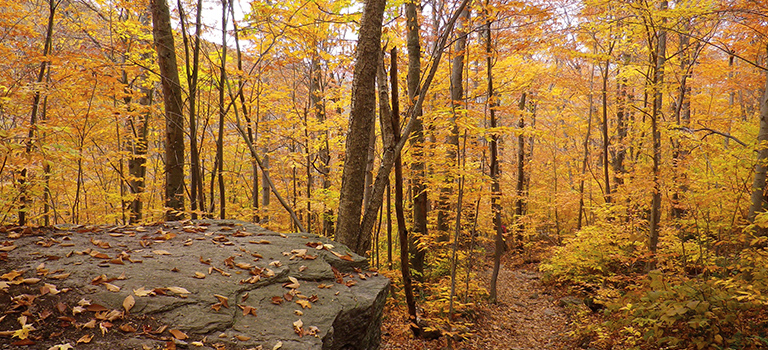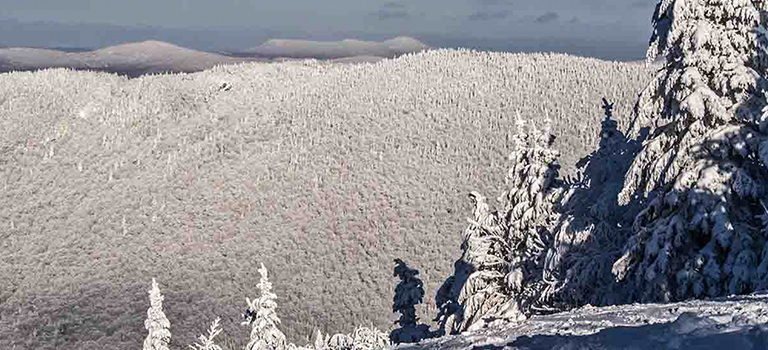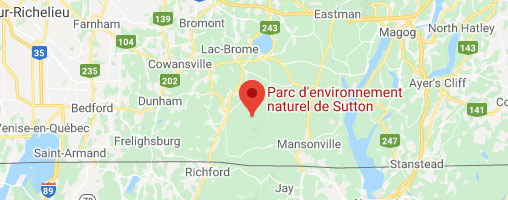The Parc d'environnement naturel de Sutton (PENS) mission is to protect Sutton's nature by ensuring well-controlled public access, in addition to an environmental education program promoting understanding, respect and conservation.
Incorporated at the federal level in 1979, this independent, non-profit organization, enjoys a charitable status by virtue of its mission, facilitating the charitable financing of its activities.

Mission
Sharing nature to better protect it: this paradox is explained in Park Sutton's (PENS) mission.
Sharing nature
The Eastern Townships unique history means that all land in this area is privately owned (or almost). To experience nature in the Eastern Townships, you must be a landowner, have friends who own land, visit a SEPAQ park, or take advantage of the efforts made since the late 70s by non-profit organizations such as Park Sutton or les Sentiers de l'Estrie. Whose goal is to obtain, manage and maintain public access rights to private natural environments.
The Park Sutton trail network currently hosts more than 40,000 hikers per year, in addition to providing free education to hundreds of young people in the area through the Youth-Nature program - and through the 4 Summits summer day camp.
To better protect it
The trail network developed and managed by Park Sutton was originally designed as a tool for raising awareness and sharing nature education. This park's dream inspired the creation, some thirty years later, of the largest private nature reserve east of Saskatchewan (Réserve naturelle des montagnes vertes). This territory was acquired for perpetual conservation by Nature Conservancy of Canada (NCC), which delegated management to the Appalachian Corridor.
As an affiliate member of the Appalachian Corridor, the PENS has remained the manager of the main public access to the reserve. While the long-term conservation of the heart of the Sutton Mountains seems to be assured, the network of hiking trails and the nature education program remains in question. Much work remains to be done to secure that all trails remain open and the Youth-Nature education program continues...

A Little Bit of History
That an environmental organization can become a locomotive of economic development without losing its soul is anything but banal.
1978-1982. A Complicated Beginning
The Parc d'environnement naturel de Sutton project began in 1978, when the Quebec government debated between choosing the Sutton Mountains and Mount Megantic to establish an astrological observatory.
The initial concept included a protected territory (the park) and an education center for astronomy and natural sciences, managed by a Commission de conservation de la région de Sutton (Sutton Regional Conservation Commission) with the mandate of protecting all of Brome County's natural resources. Quebec government favored Mégantic to build the observatory.
The Commission de conservation de Sutton (the conservation authority), due to lack of governmental financial support, pulls out of the project. In August 1979 The Parc d’environnement naturel de Sutton (PENS) is set up as a non-profit organization independent of governmental structure. Its mission statement is similar to that of Commission de conservation de Sutton and remains focused on creating a nature park dedicated to conservation and environmental education (including astronomy). But in the absence of stable funding, the organization questions its future.
1983-1992: A Breath of Fresh air
Several initiatives emerge during the same time period. In 1979 the Sentiers de l’Estrie extend their longest hiking trail by opening a new section of trail from the Missisquoi Valley to Mount Echo. That same year the Service plein air frontière was created with the intention of becoming a link between the trail managers in the region (mostly dedicated to cross-country skiing, located in the valley rather than in the mountains).
From 1983, these outdoor enthusiasts infuse new energy into the PENS. In less than ten years, about fifty kilometers of trails - including most of the Village-Montagne trail - is created with help of volunteers, wage subsidies, the Katimavik program, dues and local sponsorships. During the first years, the project benefits from the logistical support from Mont Sutton inc. and financial support of the Bureau des congrès et du tourisme de Sutton (BTCS, and before that CDES). The township and the town of Sutton join the project in 1986.
During the same period, the PENS continued to animate educational activities and helped Mont-Sutton inc. in the development of the Panoramaduhaut d’la côte (fall festival) in 1987. In 1988, rustic camping sites were created at Spruce and Mohawk Lakes. The summer management of the chalet at the top of the ski slopes (Alt 840) as a free refuge open to all began in 1991.

1985-2000 : The park régional éclaté
The park project is re-launched in 1985, with the slogan Une région un parc (One Region One Park), paving the way for Parc régional éclaté. The targeted area once again includes ecological sensitive areas from Piémont des Appalaches, between Frelighsburg and Eastman. Presented in 1987 at a regional symposium organized by the MRC Brome-Missisquoi, the project seemed to generate interest. In the end, the MRC retains the idea of a conservation area focusing on the Sutton Mountains, a concept that will be integrated into its regional development plan.
At the initiative of PENS, several environmental groups in the region continued to promote the Parc régional éclaté. In the form of a regional park pilot project, the concept is retained in the Provincial Parks Policy of 1993- but without concrete results. A detailed conservation plan for the development and management of the Parc régional éclaté was published in 1995. It was rejected by the MRC in 1996. In the following years, several attempts were made to revive the project, but to no avail. The creation of provincial, national or regional parks funded by the state and freely accessible to all is no longer at the forefront of public opinion.
2001-2011: Growing popularity.
Because of strong pressure to self-finance all of its activities, the PENS begin charging an access fee to the trail network in 1997. Trail access is centralized at the top of Réal road. The Spruce Lake and Mohawk Campgrounds are closed, and accommodation activities are centered at the ski chalet Alt.840. For ten years, the focus was on profitability of PENS activities. The strategy was based on revenue growth from trail access, improved year round activity promotion and the development of new hiking circuits. Education and conservation projects were put on the back burner.
The latter component is re-launched by the Appalachian Corridor, a new organization focusing on private conservation to establish a trans boundary protected corridor the size of a national park. Following the gradual acquisition by Conservation Nature Canada of several hundred hectares in the heart of the Sutton Mountains, the Green Mountain Nature Reserve (RNMV) was created in 2009. This ambitious conservation initiative will stimulate a recreational tourism development already driven by outdoor enthusiasts, particularly in the PENS sector, which welcomes most of the RNMV hikers.

2012-2017: Upgrading
Victim of its own success, the trail network ended up becoming seriously eroded. A first diagnosis carried out in 2000 showed major problems, due to trails too steep to support tens of thousands of hikers. Following the 2012 assessment, the PENS undertakes to solve the problem by relocating the most damaged sections of the trails. This work was largely funded by two federal community infrastructure programs. A five-year refurbishment plan is completed in 2017. The PENS also completes a Village-Mountain trail that was in the works for more than 30 years, following the town of Sutton obtaining the right of passage to connect the mountain to the village.
In the process, the PENS re-launched its educational program by implementing a Youth-Nature education program for all schools in the region, and setting up a summer nature camp whose immediate success cannot be denied.


